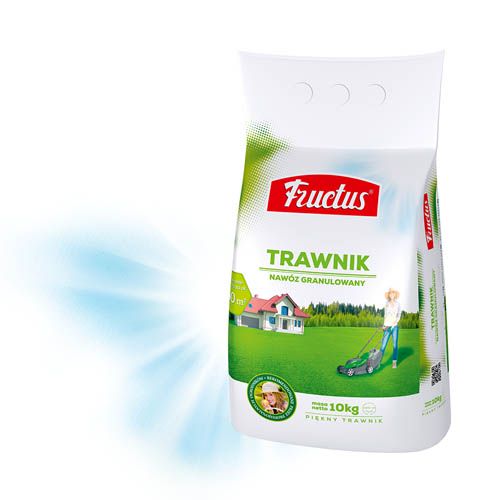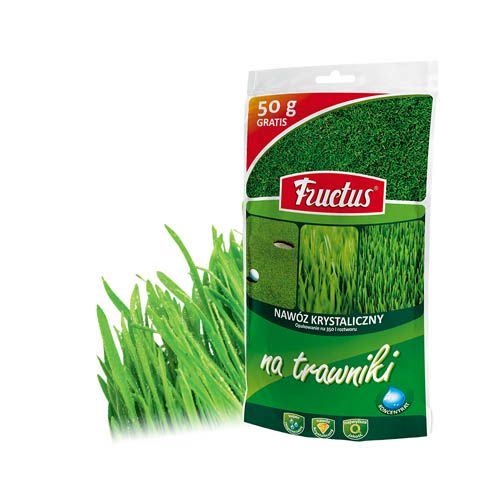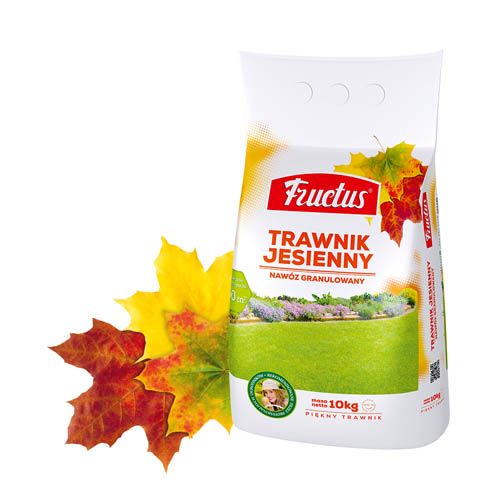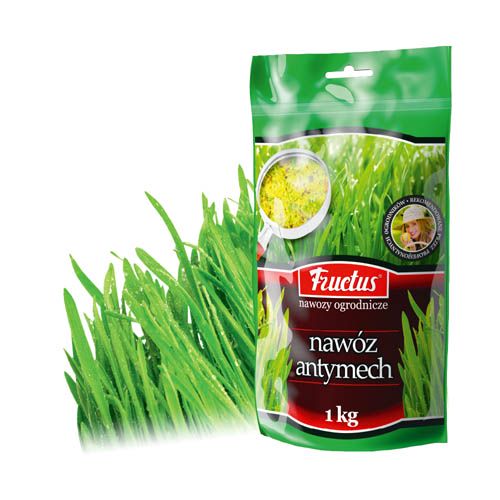Advice
We set up a lawn
A nice and well-kept lawn at our house is not only a place for socializing combined with a children’s playground and a relax zone necessary after a hard day’s work. It is primarily a showpiece and a source of pride for those who care about their lawns. In order to change our backyard lawn into an oasis of beauty and make it meet our expectations we have to devote a lot of attention to it. We should also gain a basic understanding of the principles how to set it and about diverse beauty treatments it requires.
more
Choice of seeds
When making a lawn it is very important to properly select the appropriate seeds taking into account the purpose of the lawn – whether it should be a decorative or utility one i.e. subject to trampling and exploitation.
Lawn substrate preparation
When deciding to set up a lawn, we need to thoroughly clean the surface of debris, remains of masonry lime, stones, etc. (it mainly refers to land after the completion of construction works) and if the area is a so-called necrosis to a depth of 30 cm, it needs to be fertilized by adding organic matter – at least 5-cm layer of compost or peat substrate. The best substrate under a lawn is permeable and moderately moist.
Another important element is to check the pH reaction of the soil, it can be done by using a commercially available pH-meters or by giving the soil for analysis in a chemical-agricultural station. The pH reaction should be slightly acidic: pH 5.5-6.5. When pH is less than 5.5, we should add lime to the soil (re-acidify) by applying lime in the form of carbonate. For soils of pH 7.0-8.0, for example, ammonium sulphate should be used to acidify them. Checking the PH reaction is recommended before setting up of the lawn as well as during its use in annual intervals.
The top layer should be dug to a depth of a shovel, levelled and watered. Then wait for about two weeks to stabilize the soil. The area under the lawn must be perfectly levelled and tamped down. However, excessive compression (e.g. by means of mechanical vibration) should be avoided, as this may damage the soil structure, impede the seed germination and initial growth of grasses.
It is best to start preparing the ground in late autumn, leaving the soil dug in this form for the winter. After this period, in early spring, raking should be started in order to level the ground.
WEED
After the period of stabilization of the ground we can expect stimulated germination of weed seeds. It is worth to apply weeding, preferably chemical, by the use of commercially available herbicides. Herbicides should be applied strictly according to the instructions on the packaging. In the case of use of weeding agents note that sowing of seeds can be started after 3-4 weeks.
SOWING OF SEEDS
Seed germination is influenced primarily by the level of humidity and temperature (10-20 ° C), thus it is best to start sowing grasses in the periods: April-May and August – early September. At that time heats are not noted and at night there are abundant dews. In other periods, the success of sowing is more or less dependent on artificial irrigation. Immediately before sowing, the substrate requires to be churned at a depth of 2-3 cm (e.g. with a rake). Seeds should be sown in the soil with adequate moisture, i.e. in such soil that does not need immediate intensive watering. Strong watering after sowing seeds brings a danger of displacement, which is why the time after heavy rains is a good period for sowing.
Sowing can be done manually or by using a special seeder. Seeds should be divided into two equal portions and sowing should be performed by cross-seeding, covering the area twice. Seeds will start to germinate, if we provide them with constant contact with moisture. Left on the soil surface they will be exposed to adverse factors, such as preying birds and the wind. It is really essential, therefore, to cover the seeds to a depth of approx. 1 cm with the use of an elastic rake with flat thin teeth. Finally, the whole may be slightly rolled so as to reduce the evaporation of water from the soil and the seed elution in the case of heavy rain. In the absence of rainfall the lawn should be regularly sprinkled in the morning or in the evening.
LAWN FERTILIZATION
In order to feed and prepare a perfect substrate for a lawn we recommend a perfectly balanced fertilizer in terms of nutrients: Fructus lawn. It ensures a beautiful green grass throughout the vegetation period and, thanks to the content of dolomite, creates favorable conditions for the development of the root system. Properly selected macro- and micronutrients stimulate the growth and stimulate the propagation of grasses, thereby increasing the density of the turf, which prevents the appearance of moss adversely affecting the appearance of our lawns.
Granulate form and proper selection of nutrients cause that Fructus Lawn is characterized by long-lasting operation. This fertilizer can be used from early spring to late summer for both substrate preparation and conditioning fertilization. The recommended annual dose is 10-15 kg / 100 m2, whereas the single dose should not be greater than 4 kg / 100 m2. When setting up lawns (pre-sowing) we should use about ⅓ of the annual dose – the fertilizer should be mixed with the soil to a depth of 15 cm.
Fertilization should be carried out at least 7 days prior to sowing of grass seeds. The remaining part should be mainly applied after conditioning mowing of the lawn by evenly spreading the fertilizer.
LAWN MOWING
Mowing should be done systematically, so that the grass does not exceed 6-8 cm. The optimum height of residential lawns should be about 3.0-3.5 cm. A freshly mowed lawn is very sensitive to drought that is why in the absence of rainfall it should be watered. The appearance of the lawn depends more on the frequency rather than the height of mowing, therefore, we should mow higher and more often rather than lower and less frequently.
LAWN WATERING
Watering of the lawn depends largely on the weather conditions, age and type of the lawn as well as on the substrate on which it was founded. The greatest demand for water occurs during the rapid growth of grasses, i.e. in May and August. It is essential to water the lawn when the layer of soil is dried up to a depth of 3 cm. During hot days, do not water the lawn between 9 a.m. and 5 p.m., because it can cause a slowdown or burn the lamina. It is better to irrigate less often and more abundantly rather than poorly because repeated use of low-doses makes the plants weak and increases their demand for water. It should also be remembered that slight drying causes less damage to our lawns than excess of water.
FIGHTING MOSS
Moss is definitely an unwelcome visitor on our lawns. Its appearance is prevented by application of Fructus Lawn – a fertilizer, thanks to which grasses form a compact turf. Besides, prevention and making conditioning treatments, such as maintaining the proper pH reaction (very acidic), lawn aeration, prevention of excessive moisture – especially in shaded areas – as well as regular mowing to a uniform height (not too low) are also very important.
FOR LAWN CARE WE RECOMMEND:
Fructus TRAWNIK (Fructus Lawn)
| 2,5kg | 5kg | 10kg | 25kg |
Fructus TRAWNIK JESIENNY (Fructus Autumn Lawn)
| 5kg | 10kg | 25kg |
Tips Fructus – Anti-moss
FOR FIGHTING MOSS WE RECOMMEND:
Fructus ANTYMECH (Fructus Anti-moss fertilizer)
| 5kg | 10kg | 25kg |
SHOW ALL PRODUCTS FOR LAWN CARE
- Fructus Trawnik (Fructus Lawn) – granules
- Fructus Nawóz antymech (Fructus Anti-moss fertilizer) – granules
- Fructus Antymech (Fructus Anti-moss) – granules
- Fructus Trawnik jesienny (Fructus Autumn lawn) – granules
- Fructus na trawniki (Fructus for lawns) – crystalline
- Fructus Antymech (Fructus Anti-moss.) – crystalline








